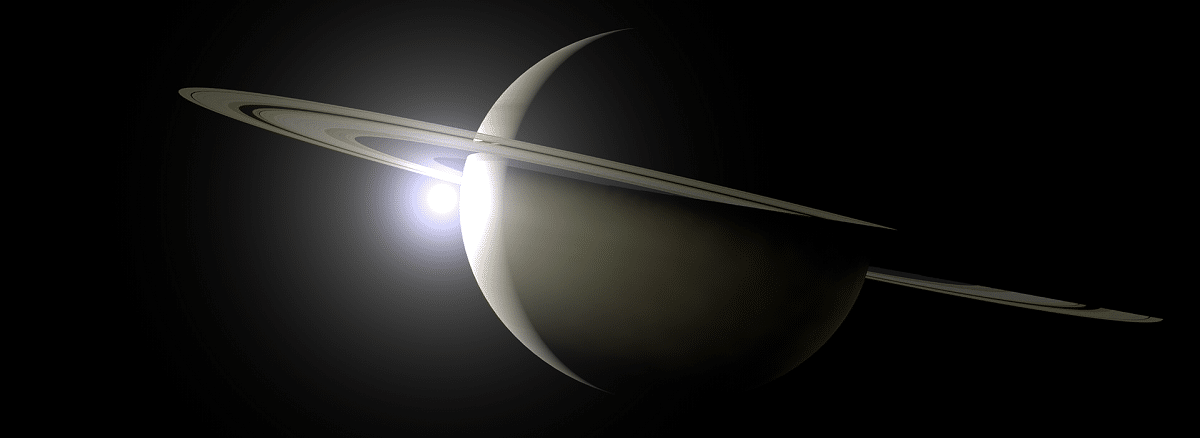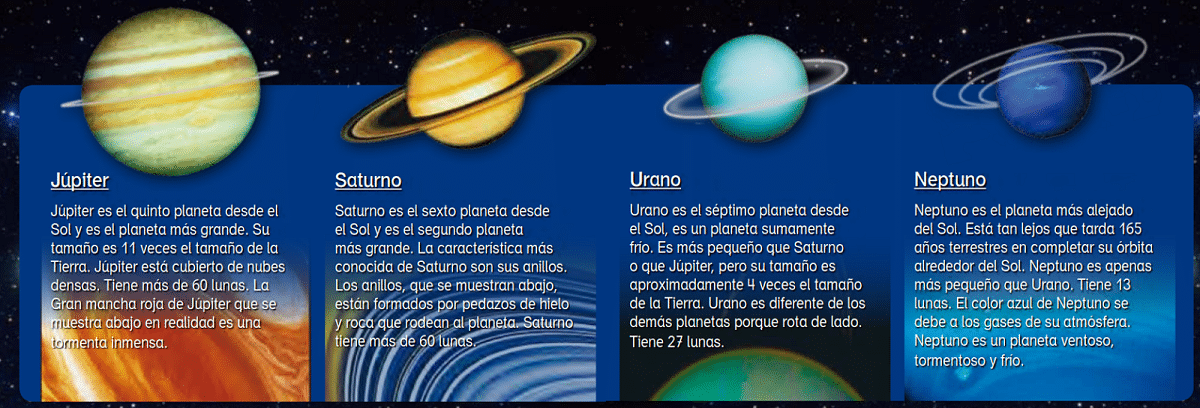
Within the solar system We have made various classifications to select planets that have similar characteristics. We have come across inner planets and with Outer planets. In this case, we are going to divide what are the planets with rings and its main characteristics. There are a great variety of types of planets and some are more interesting from an aesthetic point of view, such as planets with rings. There are many people who still do not know the existence of these rings and what they are composed of.
Therefore, in this article we are going to talk about which are the planets with rings and their main characteristics.
Planets with rings of the solar system

As we know, there are different types of planets according to their morphology, their characteristics and their position with respect to the sun. Although the rings of the planet Saturn are the best known of all, in reality, all the gaseous planets in the solar system have a ring system. These gaseous planets are also called outer planets since they are further from the sun. We know that there are 4 of these planets and they all have rings. Let's analyze what they are and their characteristics:
- Jupiter: it has a fairly faint ring system that cannot be seen with the naked eye. This is one of the reasons why whenever Jupiter is seen in the photos well, the images are not represented with a ring system. If you use a conventional telescope you will not be able to see the ring system either as it is quite small. It was discovered in 1979 when the Voyager 1 space probe was able to discover these rings.
- Saturn: It is the quintessential ringed planet of the solar system. And it is that it has the most showy ones and they are made up of quite broad and complex elements. Different interior areas and systems can be found within the ring system. Most of them are made up of dust and ice particles that are orbiting the planet. When seen from afar these elements are seen as if they were one and were united among them.
- Uranus: it is a planet that also has a ring system. It has a less showy system than that of Saturn but bigger than that of Jupiter. This is one of the reasons why Uranus is represented by rings. It has a total system made up of 13 well-defined rings. If we observe this planet with a telescope, we can observe particles ranging from very small sizes to rocks that can be up to one meter in size. All these particles are floating around the planet.
- Neptune: It is the last of the planets in the solar system and has a ring system. It is more similar to that of Jupiter since it is very difficult to identify due to its small size. It cannot be detected without the help of special equipment and telescopes that have enough power. This ring system is made up of silicates, ice and some organic compounds as a consequence of the action of the planet's own magnetosphere.
Composition of planets with rings

Once we have analyzed which are the planets with rings belonging to the solar system, we are going to classify them. We know that the planets of the solar system can be divided into two large groups: on the one hand, we have the rocky planets and on the other hand we have the gaseous planets. The composition of both groups is totally different. However, this division helps to be able to differentiate the planets according to the size and the main state of their mass.
We can find rocky planets that are mainly composed of a solid body made up of rocks that are surrounded by a gaseous atmosphere. These planets are also, in turn, the smallest planets that orbit closest to the sun. These planets are: Mercury, Venus, Earth and Mars.
On the other hand, we have the planets known by the name of gas giants. These planets are also the ones that have their own ring system. They are located in the outermost part of the solar system and, therefore, are also called outer planets. They are found beyond the asteroid belt and their main characteristic is that they lack a well-defined solid core. Most of the planet as a whole is in a gaseous state. They form a large mass of gas that makes up most of the planet. These planets are: Jupiter, Saturn, Uranus and Neptune.
Saturn's rings

Since Saturn is the planet best known par excellence for having a ring system, we are going to analyze it in depth. It is about the planet belonging to the solar system that have very well defined rings and that are easy to identify all of them. It must be borne in mind that the rings are not units in themselves but an optical effect resulting from the placement of millions of dust, rock and ice particles. The sensation that these elements are united forming a fixed and continuous ring is given by the orbit. And it is that these elements are orbiting continuously due to the action of Saturn's gravity.
Depending on the mass, morphology and weight of each element we can see that they orbit at different speeds. All elements can be differentiated from each other, as long as appropriate technology is used for it. Many of the elements around Saturn have been identified by different names. We know that the planet It has a total of 6 rings and each of them are named by the letters A, B, C, D, E and F. The most important are the first two and are separated by what is known as the Cassini division. A region known as a void ring is what separates the two main rings.
Although in the images that we usually see in books and documentaries, Uranus is not given rings, it does have its own system composed of 13 rings in total. It happens as with Jupiter. It is a ring system so thin and small that it cannot be seen with the naked eye.
I hope that with this information you can learn more about ringed planets.